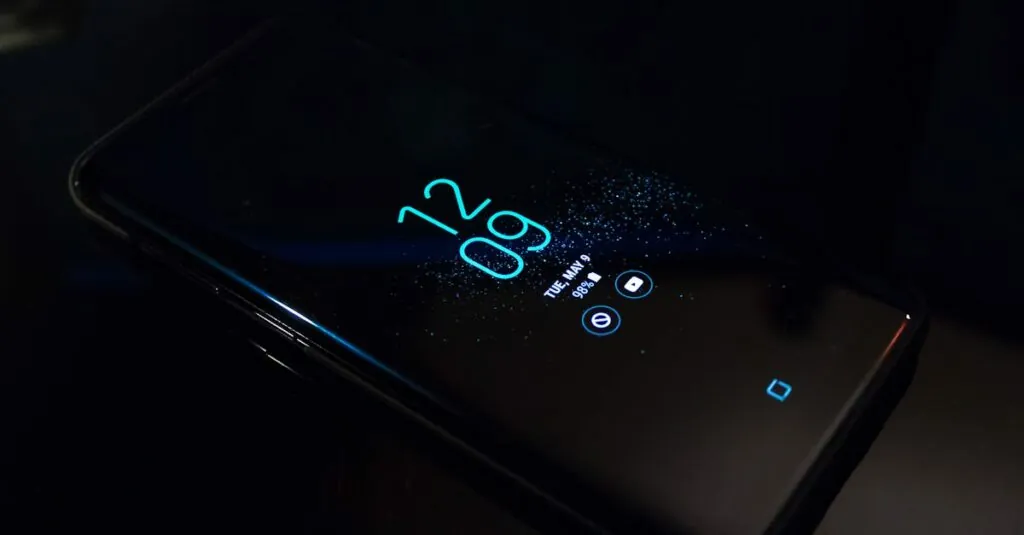Table of Contents
ToggleIn today’s digital age, it’s easy to lose track of time while scrolling through endless feeds or binge-watching the latest series. If you’ve ever thought, “Where did the last three hours go?” you’re not alone. Luckily, Android offers a handy feature to help users keep tabs on their screen time.
Understanding Screen Time
Screen time refers to the amount of time an individual spends using a device with a screen, such as smartphones, tablets, or computers. This time includes activities like social media browsing, gaming, and streaming videos.
What Is Screen Time?
Screen time encompasses total hours spent interacting with screens. It tracks usage across various applications and platforms. Users can gain insights into daily and weekly screen time metrics. This information enables individuals to identify habits and patterns. Recognizing excessive screen time helps manage device usage better.
Importance of Monitoring Screen Time
Monitoring screen time is essential for maintaining a balanced lifestyle. Awareness of usage can promote healthier habits. Research suggests excessive screen time correlates with negative impacts on physical and mental well-being. Tracking this time allows users to set limits and establish more productive routines. Adjusting screen time can enhance sleep quality and reduce stress levels.
How to Check Screen Time on Android
Checking screen time on Android is straightforward and ensures users maintain a balanced digital lifestyle. Several built-in tools and third-party apps offer comprehensive insights.
Native Android Features
Android devices feature a built-in Digital Wellbeing tool that tracks screen time. Users find this feature under Settings, where they can view usage statistics by app. Daily and weekly reports highlight time spent on individual applications. Notifications can alert users when they exceed preset usage limits, encouraging healthier habits. Devices running Android 9 and later typically include this feature, making it accessible to many users.
Third-Party Applications
Numerous apps enhance screen time tracking on Android beyond native options. Applications like ActionDash and StayFree provide detailed analytics and customized usage reports. These tools allow users to set specific limits and schedule usage breaks for different apps. Popular third-party options also include features like activity logging and usage reminders. Installing these apps can improve screen management while promoting a healthier digital experience.
Customizing Screen Time Settings
Customizing screen time settings on Android devices enhances user control over device usage. Users can adjust these settings to create a balanced digital experience.
Setting Limits
Setting limits is crucial for managing device usage. Users can establish daily time constraints for individual apps through the Digital Wellbeing tool. For instance, a user can allocate two hours for social media apps and one hour for gaming. After reaching the limit, the app becomes inaccessible until the next day. This feature allows users to cultivate healthier screen time habits and promote self-discipline.
Notifications for Screen Time
Notifications serve as reminders for screen time management. Users can enable alerts to notify them when they approach or exceed preset limits. For example, a notification might appear five minutes before a limit is reached, prompting the user to reconsider usage. Such reminders encourage users to be mindful of their time spent on devices and reinforce positive habits regarding screen time.
Benefits of Tracking Screen Time
Tracking screen time offers multiple benefits for users seeking a balanced digital lifestyle.
Improving Productivity
Awareness of screen time can significantly boost productivity. By monitoring device usage, individuals identify patterns that distract them during work or study. Tools like Digital Wellbeing reveal how much time is spent on non-essential apps. This insight allows for better time management strategies. Setting limits on distracting applications promotes focused work sessions. Enhanced concentration leads to completing tasks more efficiently. Users often discover that reducing screen time correlates with increased productivity. These changes contribute to better overall performance in both personal and professional settings.
Enhancing Mental Health
Managing screen time can greatly enhance mental health. Excessive use of digital devices is linked to anxiety and depression. Tracking daily usage helps individuals become aware of their habits, leading to healthier digital consumption. Regular breaks from screens can reduce stress levels. Engaging less with social media can diminish feelings of comparison and inadequacy. In turn, a balanced screen time helps in fostering positive mental states. Implementing screen limits leads to more time for offline activities that benefit mental well-being. Less screen time often results in improved mood and emotional resilience.
Managing screen time is essential for a balanced lifestyle in today’s digital world. By utilizing the built-in Digital Wellbeing tool or third-party apps, users can easily monitor their screen time and make informed decisions about their device usage. Customizing settings and setting limits fosters healthier habits and encourages mindfulness, ultimately leading to improved productivity and mental well-being.
Taking control of screen time not only enhances daily routines but also promotes better sleep quality and reduces stress. By being proactive about screen time management, individuals can cultivate a more positive relationship with technology and enjoy the benefits of a healthier digital lifestyle.





